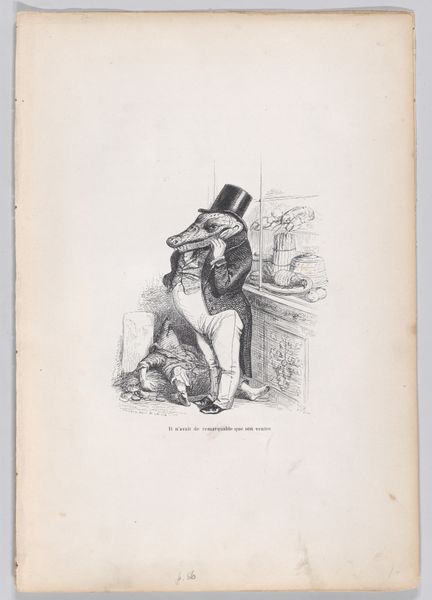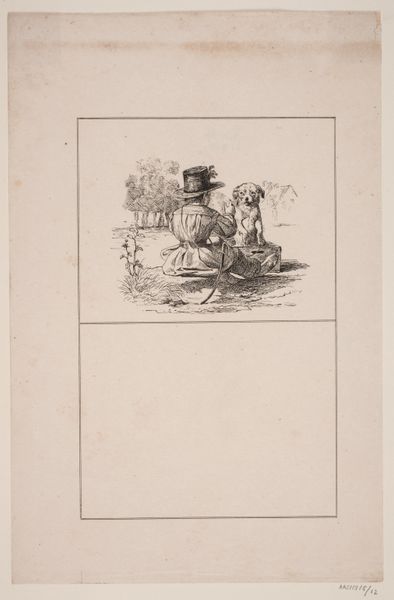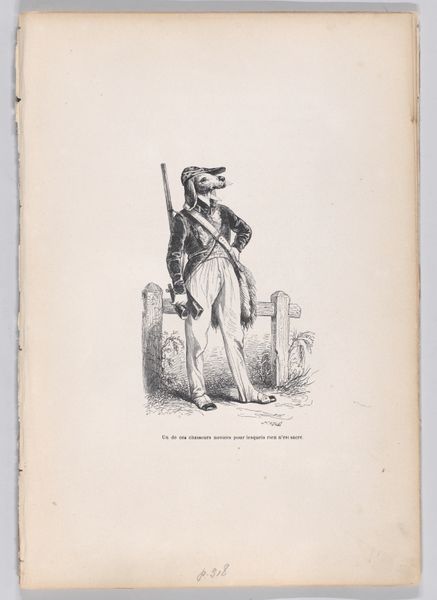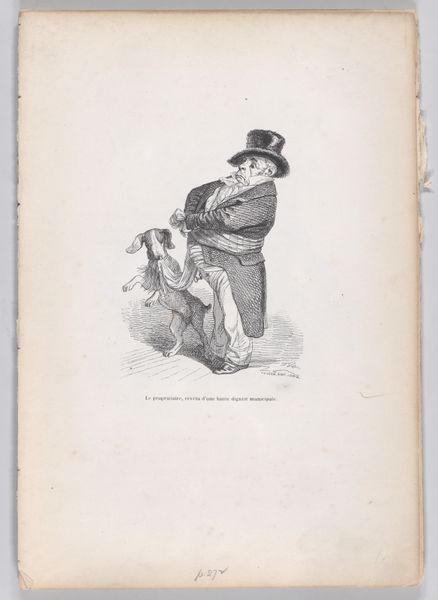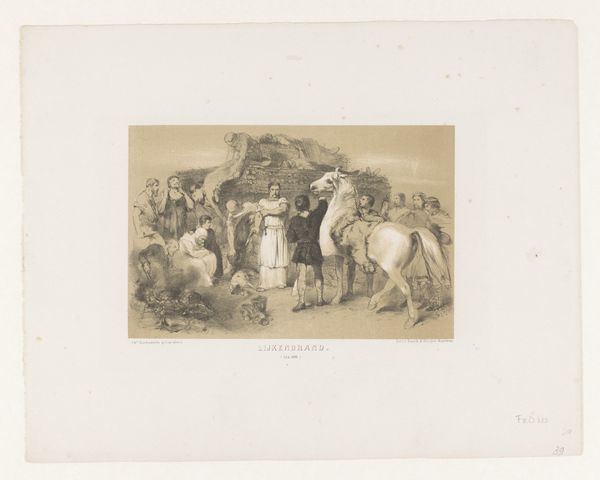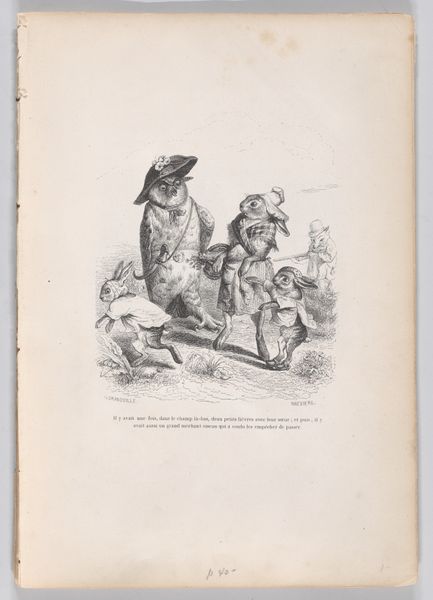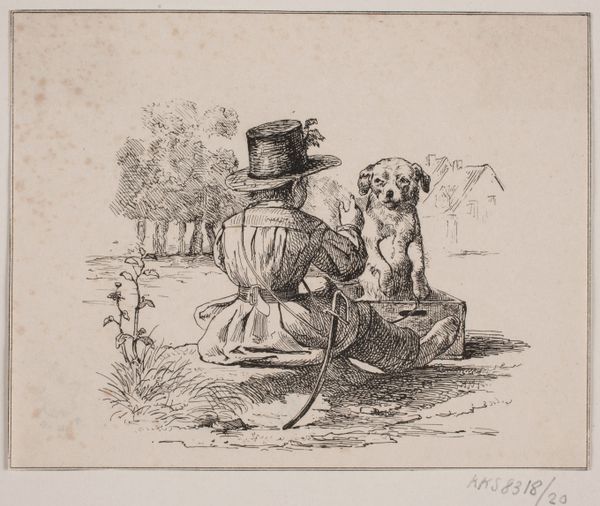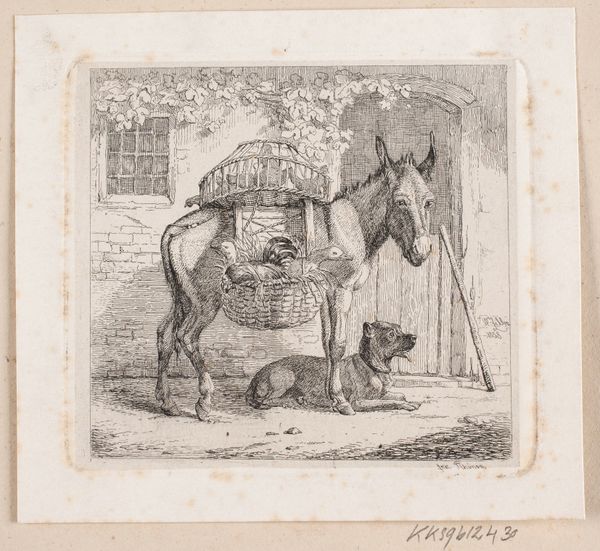
Aanbidding van het geld verbeeld door een rund 1842 - 1887
0:00
0:00
Dimensions: height 255 mm, width 165 mm
Copyright: Rijks Museum: Open Domain
Curator: Welcome. We’re standing before a drawing and engraving by Carel Christiaan Antony Last, created sometime between 1842 and 1887. It’s titled "Aanbidding van het geld verbeeld door een rund," or "Adoration of Money Represented by a Bovine." Editor: Well, it's certainly...striking. A very peculiar composition. A bovine figure, seemingly a golden calf, sits enthroned upon what looks like a safe, carried by figures representing, if I interpret correctly, the very essence of capital and its workers. The entire scene has a sort of sombre yet satirical feel to it, with the subdued grey lines. Curator: Indeed. The work employs a sharp, almost merciless line, wouldn't you agree? Consider how Last renders texture and form – the folds in the bovine's regal cape, the meticulously rendered locks of hair in the supporters. The precision speaks to an allegorical intent, positioning the artwork within the currents of Romanticism. Editor: Precisely. This bovine is nothing less than the central signifier, around which revolves critique on capitalist structures and their manifestations in Dutch society during the 19th Century. I see the human figures bent under its weight and they feel almost dehumanised – reduced to mere supports. This seems like an incisive critique of the dehumanising forces of unchecked financial greed. Last gives us the semiotics of labour, almost. Curator: It's interesting that you say that, because in its linearity and the almost diagrammatic quality of the presentation, I am reminded of Hogarth. And in its subject, it shows the influence of French political caricature from figures like Daumier. It’s intriguing to trace these genealogies of form. Editor: Absolutely. Viewing it from today, this image prompts us to reflect on our present moment, dominated by discussions around socioeconomic disparities, labour exploitation, and financial powers, reminding us how relevant Last's reflections remain even centuries later. Curator: An astute point. There’s a timelessness in its design. And a compositional strength that allows its meanings to constantly be reactivated by changing conditions. Editor: Agreed. I'll certainly be pondering this image long after we leave. Thank you.
Comments
No comments
Be the first to comment and join the conversation on the ultimate creative platform.
